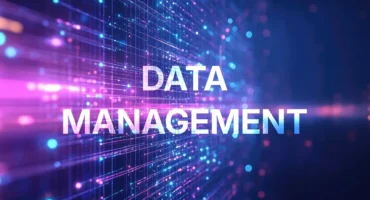
Seth Rao
CEO at FirstEigen
Data Observability: a Blueprint for Competitive Advantage in Modern Enterprises
Data Observability: a Must-Have for Modern Enterprises
Modern enterprises thrive on data-driven decision-making. Yet, raw data alone offers limited value. Success lies in extracting actionable insights, driving innovation, and maintaining a competitive advantage.
This requires a strategic approach to data management. Data observability fills this vital role. It allows businesses to understand their data’s health, track its lineage, and measure its impact on business performance. Data observability goes far beyond mere technical oversight; it’s a strategic asset for any data-centric organization.
By proactively monitoring data pipelines and identifying anomalies, organizations can pinpoint data issues early on. This builds confidence in data-driven decisions and promotes operational efficiency.
Complex Data Pipelines: From Challenges to Opportunities
Modern data pipelines are intricate networks of interconnected systems. Each system introduces its unique complexities and vulnerabilities. These intricate structures create significant challenges, including issues with data quality, performance limitations, and the labor-intensive task of tracing lineage across diverse data sources.
Data observability offers a solution that allows businesses to address these challenges and leverage them for strategic gain. By granting real-time insight into the core mechanics of data pipelines, data observability allows organizations to:
Proactively manage data quality: Continuous monitoring and automated alerts promptly identify issues. This safeguards downstream processes and reduces disruptions.
Optimize performance for efficiency: Bottlenecks and performance gaps become evident, leading to targeted enhancements and improved data pipeline throughput.
Maintain clear data lineage: Organizations gain a comprehensive understanding of data origin and transformations. This knowledge supports informed decision-making and facilitates adherence to regulatory standards.
Drive innovation through comprehensive visibility: A holistic view of data health and performance encourages experimentation. Organizations can explore new data sources and processing methods, fostering a culture of innovation and growth.
Data Monitoring to Observability: a Paradigm Shift
The advent of data observability signals a transformative shift in how organizations manage data. Traditional monitoring, with its reactive nature and limited scope, has given way to a proactive and comprehensive approach toward understanding data health and performance.
Data observability transcends the limitations of monitoring, providing richer context and insights into the complexities of data ecosystems. Beyond surface-level checks, it allows organizations to trace data lineage, comprehend interdependencies, and anticipate disruptions before they impact operations.
By adopting data observability, businesses can:
- Achieve complete transparency into data pipelines: Data observability illuminates the intricate details of data flow, giving a granular understanding of how data is transformed and utilized.
- Detect and resolve anomalies with proactive measures: Advanced algorithms and machine learning models identify anomalies in real-time. This empowers organizations to address issues at their source, preventing escalation.
- FInd valuable insights and opportunities: A comprehensive view of data health and performance reveals patterns and trends. These insights lead to strategic advantages and support innovation.
- Optimize operations for enhanced efficiency: A clear understanding of data pipelines makes it possible to have informed resource allocation and process refinement. This minimizes downtime and maximizes productivity.
Fueling Business Growth With Data Observability
In the digital age, business agility is essential. Data observability transcends its technical origins, offering a suite of strategic advantages. It drives organizations toward lasting success.
Enhancing Decision-Making and Agility
Data observability equips leaders with more than just information; it delivers actionable insights. This drives informed, timely decisions that reverberate throughout the enterprise.
- Anticipating Market Shifts: By identifying emerging trends and potential threats early, businesses can adjust strategies and seize opportunities before competitors catch up.
- Strategic Resource Allocation: A deep understanding of data’s utilization and impact enables organizations to align resources with business goals, optimizing efficiency and minimizing waste.
- Cultivating a Culture of Continuous Improvement: Regularly monitoring key performance indicators and tracking progress arms teams to identify areas for refinement and drive continuous data-driven improvement
Achieving a Competitive Advantage:
Data observability acts as a potent differentiator, offering an advantage to forward-thinking organizations. The strategic advantages of data observability are not just theoretical constructs, but are being realized by industry pioneers across sectors.
Roche: By proactively monitoring clinical trial data, Roche ensures data integrity and compliance. This accelerates the drug development process, bringing life-saving therapies to market faster.
Netflix: The streaming giant leverages data observability to understand viewing patterns and personalize recommendations in real-time. This level of data-driven engagement drives subscriber retention and fuels content innovation.
Fox: The media conglomerate uses data observability to monitor and optimize ad performance, ensuring campaigns reach the right audience at the right time. This maximizes ROI and empowers data-backed advertising strategies.
Implementing Data Observability in Complex Data Pipelines
The successful integration of data observability within a sophisticated data ecosystem necessitates a carefully crafted approach. This approach is anchored by key foundational elements and seamlessly integrated with overarching business objectives.
Foundational Elements: Pillars of Effective Observability
Data lineage, quality metrics, and real-time anomaly detection form the backbone of an effective data observability strategy. These components work in harmony to provide clarity and control in the face of increasing data complexity:
- Data Lineage: A profound understanding of data origins, its intricate journey through transformations, and its flow throughout the pipeline is indispensable. It expedites the process of pinpointing root causes and enables rapid and efficient resolution of issues.
- Quality Metrics: Establish and track pivotal metrics such as accuracy, completeness, and timeliness. These metrics serve as an unbiased yardstick to gauge data health. They facilitate proactive identification and address deviations from established standards, ensuring data integrity.
- Real-Time Anomaly Detection: The latest algorithms and machine learning models offer a continuous monitoring capability. This helps organizations to detect anomalies promptly, safeguarding downstream processes and enabling swift responses.
Strategic Implementation: Aligning With Business Goals
Embedding data observability into the core of an organization requires a deliberate and intentional approach.
- Harmonize with Business Objectives: The starting point is to identify key business metrics and then seamlessly align data observability initiatives with these core goals. This direct connection ensures that the generated insights are directly translated into actionable strategies that foster tangible growth.
- Cultivate Data Literacy: Nurture a workforce that truly values high-quality data. Inspire and motivate your team to leverage data-driven insights to spark innovation and drive continuous improvement.
- Embrace Technological Innovation: The data ecosystem is a dynamic and rapidly evolving one. Staying at the forefront of technological advancements and tools is essential. Actively evaluate machine learning algorithms, automation capabilities, and cloud-based solutions to elevate your data observability practices. This strategic approach arms you to extract maximum value from your data ecosystem.
Overcoming Common Pitfalls in Data Observability
The journey towards comprehensive data observability has its challenges. Organizations encounter pitfalls that hinder progress and diminish the transformative potential of data observability initiatives. Some common challenges and the strategies to overcome them are:
Pitfalls and Their Remedies
- Data Overload: The sheer volume and variety of data lead to alert fatigue and missed insights. It’s essential to prioritize and filter alerts strategically, focusing on essential data assets and business-critical metrics.
- Siloed Data: Fragmentation of data across different systems and teams creates blind spots and hinders visibility. Data observability initiatives should promote collaboration and break down silos, enabling a unified view of the data environment.
- Lack of Clear Ownership: When accountability for data quality and observability is ambiguous, issues fall through the cracks. Assigning clear ownership and defining roles and responsibilities is important for sustained success.
- Resistance to Change: Introducing new tools and processes sometimes encounters resistance from employees. Open communication, education, and demonstrating the clear benefits of data observability are key to their confidence and willingness.
Strategies for Success
- Start Small, Scale Strategically: Begin with a pilot project focused on a critical data pipeline or business process. Demonstrate quick wins and build momentum for broader adoption.
- Cultivate a Data-Driven Culture: Encourage employees to use data insights to inform decision-making and problem-solving.
- Invest in Education and Training: Provide ongoing training on data observability tools and techniques, ensuring teams can effectively use and interpret the insights they gather.
- Adapt to Automation: Leverage automation to streamline data monitoring, anomaly detection, and incident response.
- Continuous Improvement: Data observability is not a one-time project; it’s an ongoing process. Regularly evaluate your practices, learn from successes and challenges, and evolve to stay ahead of the curve.
Data Observability in the Age of AI and Compliance
The convergence of AI capabilities and increasingly stringent regulatory requirements is undeniably transforming how organizations manage and leverage data. However, data observability offers not just a means to adapt to these complexities, but a strategic advantage to thrive within them.
Harnessing AI and Machine Learning: The Future of Observability
AI and machine learning are poised to become integral components of data observability solutions. These advanced technologies hold immense potential to elevate observability efforts, introducing powerful predictive analytics, anomaly detection, and automated remediation capabilities.
- Predictive Analytics: Machine learning models learn from historical patterns, allowing for the identification and resolution of issues before they disrupt operations.
- Intelligent Anomaly Detection: AI algorithms offer real-time detection of even the most subtle anomalies, supporting faster response times and decreasing potential impacts.
- Automated Remediation: AI-driven automation execute predefined responses to identified issues, accelerating incident resolution and minimizing downtime.
Navigating Compliance With Confidence
Due to heightened regulatory scrutiny, effective data governance and adherence to compliance standards have become paramount. Data observability provides organizations with the capabilities to uphold these standards and mitigate risks.
- Complete Data Lineage: Maintaining a detailed record of data origins and transformations provides an audit trail, allowing organizations to demonstrate regulatory compliance.
- Data Quality Assurance: Rigorous quality metrics safeguard the accuracy and integrity of data, reducing the risk of non-compliance penalties.
- Sensitive Data Monitoring: Data observability can be effectively leveraged to identify and protect sensitive information, ensuring adherence to privacy regulations.
Preparing for Tomorrow
The data environment is rapidly evolving, demanding organizations remain agile and forward-thinking. To maintain their competitive advantage, leaders must capitalize on emerging trends.
- Cloud-Native Observability: As cloud adoption continues to rise, data observability solutions will need to seamlessly integrate with cloud-native technologies.
- Real-Time Analytics: Organizations will increasingly demand faster, more actionable insights. Near real-time data observability is becoming essential for nimble decision-making and proactive responses.
- DataOps Integration: Data observability will play a pivotal role in driving collaboration and alignment between IT and business teams, enhancing operational efficiency and data-driven innovation.
Discover how FirstEigen’s DataBuck can transform your data strategy.
Driving Business Transformation Through Data Observability
Data observability serves as a powerful catalyst for change within an organization. It equips leaders to address the challenges of modern data management, cultivate a culture of data-driven decision-making, and move toward sustainable growth.
Key Takeaways for Business Leaders
Data observability is not a one-time project but a continuous journey of evolution and adaptation. To fully realize its benefits, leaders must:
- Champion Data Literacy: Cultivate a workforce that not only understands but values the importance of data quality and accuracy. Build an environment where data insights inform strategic decision-making at every level.
- Invest in the Right Tools: Select data observability solutions that align with your organization’s specific needs and technological landscape. Evaluate features like real-time monitoring, anomaly detection, and integration capabilities.
- Establish Clear Accountability: Define clear ownership of data quality and observability across teams and individuals. This clarity promotes proactive management and a sense of responsibility for data integrity.
- Encourage Exploration: Promote a mindset of experimentation with new data sources and processing techniques. Data observability provides a safety net, allowing organizations to confidently innovate while mitigating risk and ensuring data-driven insights are always reliable and actionable.
Integrating Data Observability Into Your Strategic Vision
To seamlessly integrate data observability into your organization’s strategic vision:
- Start with a Clear Purpose: Define specific, measurable business objectives that data observability can help achieve. This clarity will guide your implementation efforts and demonstrate tangible ROI.
- Collaborate Across Teams: Data observability impacts various business functions. Encourage collaboration between IT, data science, business analytics, and operational teams to ensure alignment and maximize value.
- Adopt a Phased Approach: Begin with a pilot project focused on a critical data pipeline or process. Document lessons learned and scale strategically across the organization.
- Measure and Monitor Progress: Regularly track key data observability metrics and assess progress toward your defined business goals. This allows for continuous refinement and optimization of your strategy.
By adopting these practices and viewing data observability as a strategic asset, leaders can guide their organizations through the challenges of data management with agility and confidence. This allows you to transform challenges into opportunities and take your business forward in an increasingly data-driven world.
Explore Data Observability Solutions With DataBuck
With the increasing complexity of data environments, having a robust data observability solution is crucial for ensuring data quality and integrity. FirstEigen’s DataBuck not only provides real-time monitoring and insights but also automates anomaly detection and data validation, allowing your team to focus on strategic decision-making rather than troubleshooting issues. Transform your approach to data management and ensure your organization’s data is trustworthy and actionable.
Contact FirstEigen today to learn more about data quality and data trustability.
Check out these articles on Data Trustability, Observability & Data Quality Management-
FAQs
Data observability is the ability to monitor and understand the health of your data pipelines comprehensively. It’s essential for ensuring data quality, improving decision-making, and maintaining compliance. For organizations relying on data-driven strategies, observability enables proactive management of data quality issues, ultimately enhancing operational efficiency and business outcomes.
By providing real-time insights into data health, observability allows organizations to identify and resolve data quality issues promptly. This proactive approach helps optimize pipeline performance, ensures accurate data lineage, and facilitates regulatory compliance, leading to more reliable decision-making.
Data observability tackles challenges such as data quality issues, performance bottlenecks, and difficulties in tracing data lineage. It enables organizations to monitor their data pipelines continuously, detect anomalies in real-time, and maintain a clear understanding of data flow, leading to improved overall data management.
Start by evaluating your current data pipelines and identifying key business metrics. FirstEigen can guide you through the implementation process by aligning data observability initiatives with your organizational goals. Contact us for a personalized consultation to discuss the next steps.
Automation streamlines data monitoring and anomaly detection processes, enabling your team to focus on strategic decision-making rather than manual oversight. With FirstEigen’s DataBuck, you can leverage advanced algorithms to automatically detect anomalies and trigger alerts, ensuring timely responses to potential data issues.
DataBuck provides comprehensive visibility into your data pipelines, offering real-time monitoring, automated alerts, and advanced anomaly detection. This empowers organizations to maintain high data quality, optimize performance, and drive innovation, making it a valuable asset for modern enterprises.
Discover How Fortune 500 Companies Use DataBuck to Cut Data Validation Costs by 50%
Recent Posts
Get Started!



